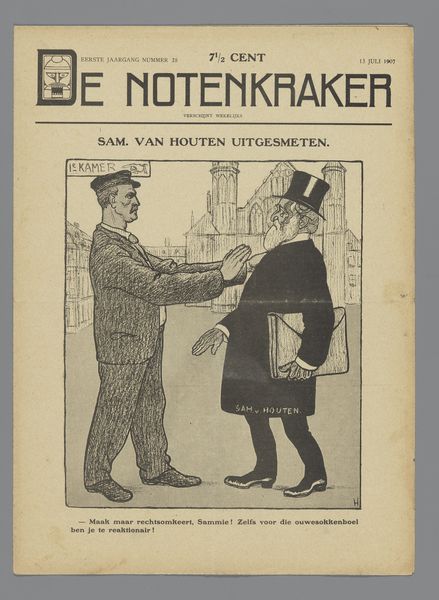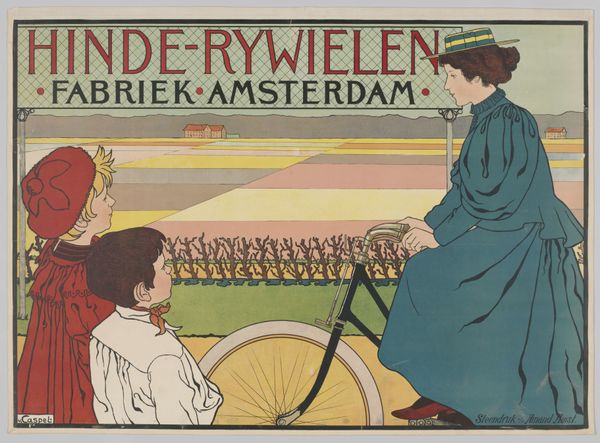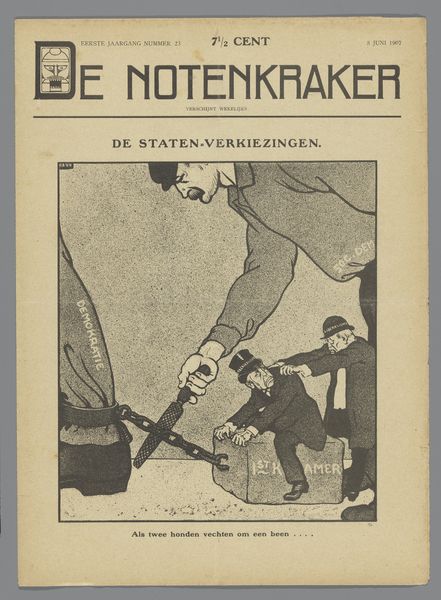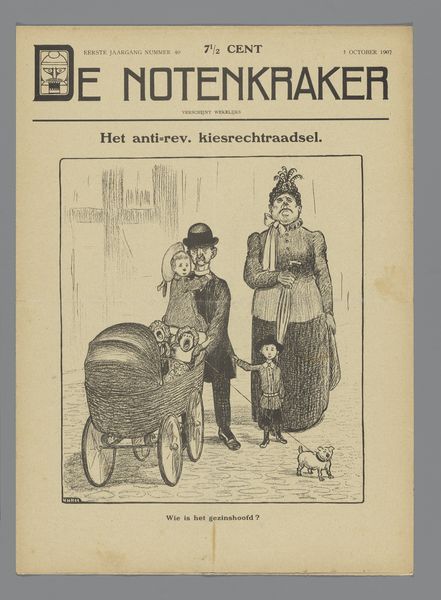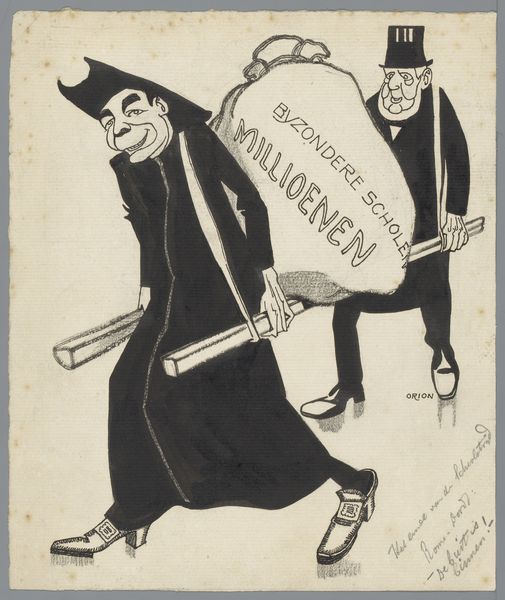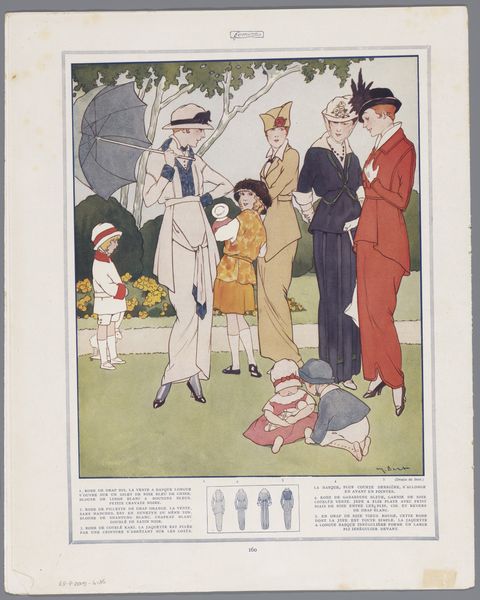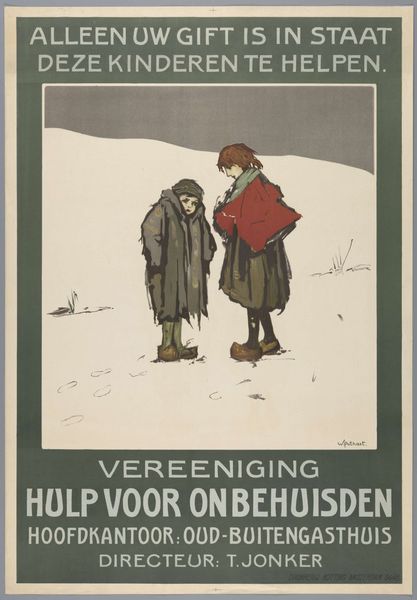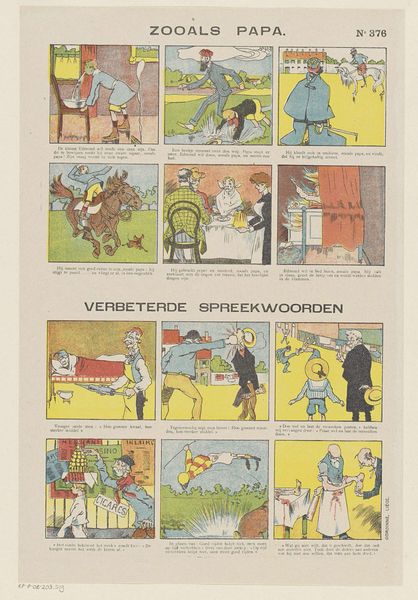
drawing, graphic-art, print, poster
#
portrait
#
drawing
#
graphic-art
#
art-nouveau
# print
#
caricature
#
cityscape
#
watercolour illustration
#
cartoon style
#
poster
Dimensions: height 1070 mm, width 720 mm
Copyright: Rijks Museum: Open Domain
Curator: The jaunty composition and unusual sartorial choices in this vintage poster, titled "Kreymborg's Kleeding Maakt Heeren," immediately grab your attention. Dating from 1905 to 1913, this work by Arnold van Roessel cleverly uses graphic art, particularly printmaking, to advertise clothing. Editor: I find the high-contrast cartoon style quite striking, but the underlying message here begs to be interrogated. It's almost satirical—pointing at constructed masculinity in an era of rapid industrial change. Curator: I agree; the contrasting sizes of the figures point to a shift of clothing as status symbol. Look at how materiality is represented – the textures, stripes, and patterns crafted with great attention to detail. It demonstrates both a promotion of the product and of the lifestyle that product offers. Note the pointed choice of color, as well. Editor: Exactly! The bright color is meant to seduce consumers but more interestingly there is almost a clash between the idea of high fashion versus class parody. Both characters here lack...authenticity and feel almost grotesque when placed in juxtaposition with what should read as "fine menswear." Who were they really speaking to with an ad campaign such as this? Curator: That's a great point. By playing with conventions and disrupting traditional marketing, I'd imagine they successfully engaged a more diverse clientele. Their use of graphic-art is a canny method of communicating, by use of readily available materials for rapid consumer engagement. Editor: There's also an interesting dichotomy when considering the era of the art. It presents ideas about class and status during the height of modernism when conventional social values were undergoing seismic shifts. Did it critique the very notion of acquiring refinement or, in a more positive framing, were they offering ways to integrate emerging socio-cultural groups into traditional society? Curator: Looking at how Arnold van Roessel handled color, materiality, and composition, this commercial image functions on numerous artistic and economic levels. This certainly opens more discussion regarding social perceptions and consumer practices in early twentieth-century urban cultures. Editor: Indeed! From considering audience consumption to probing subverted cultural messages, “Kreymborg’s Kleeding Maakt Heeren" seems anything but straightforward when understanding menswear as an identifier, and even construction, of social capital.
Comments
No comments
Be the first to comment and join the conversation on the ultimate creative platform.
